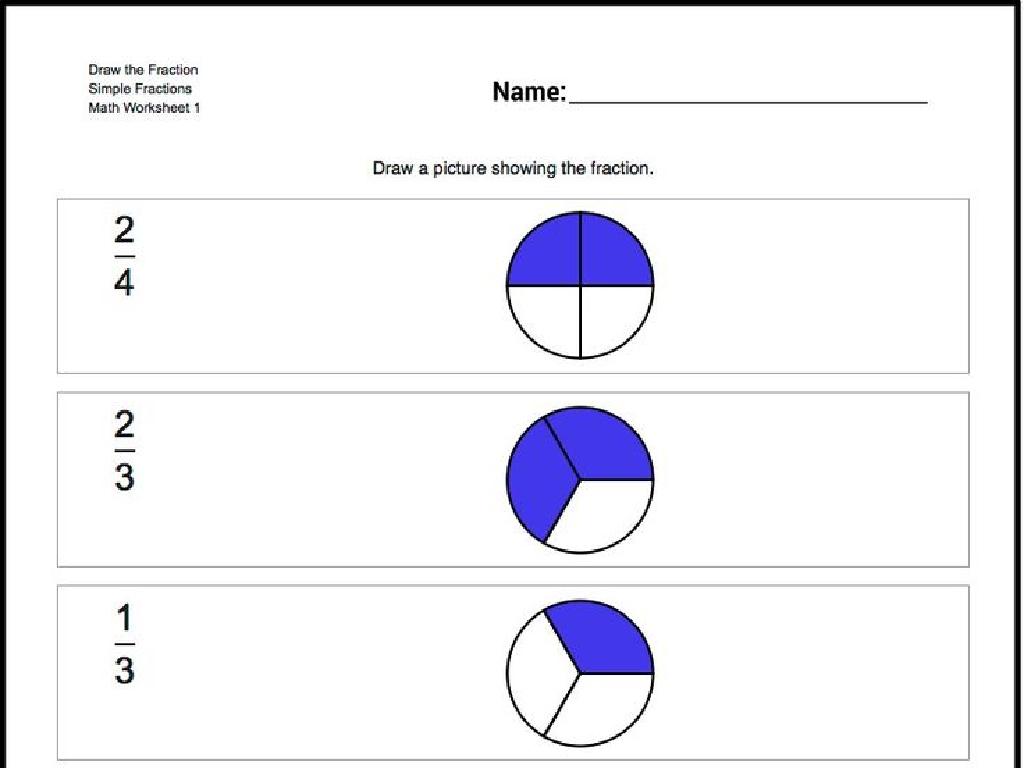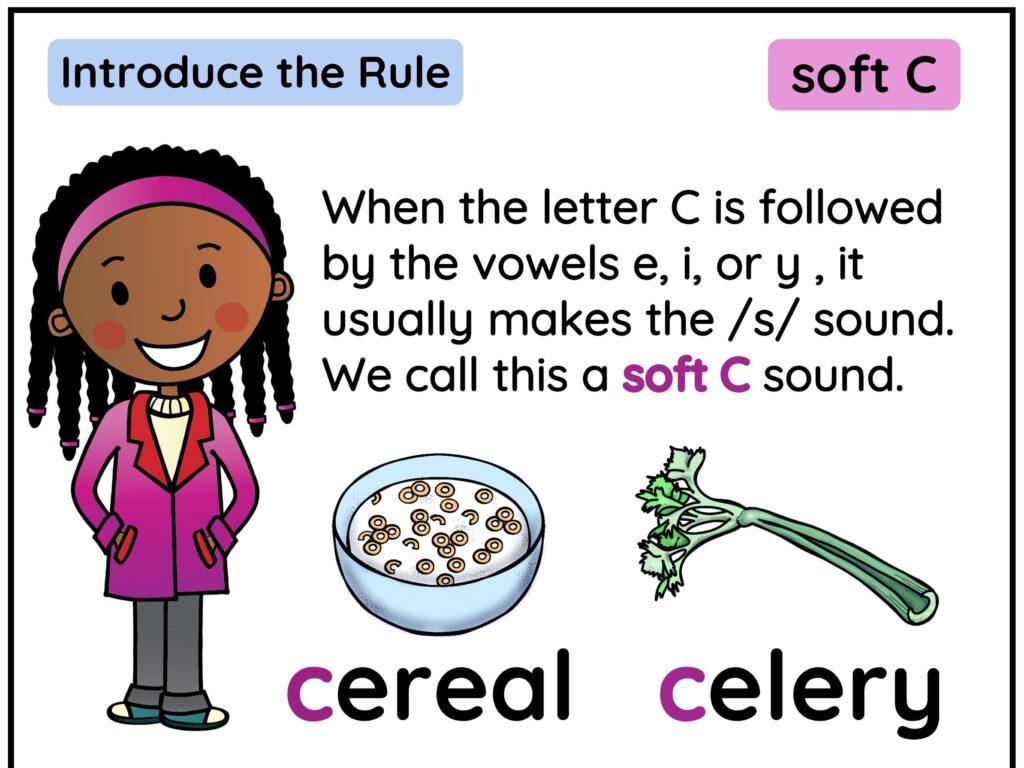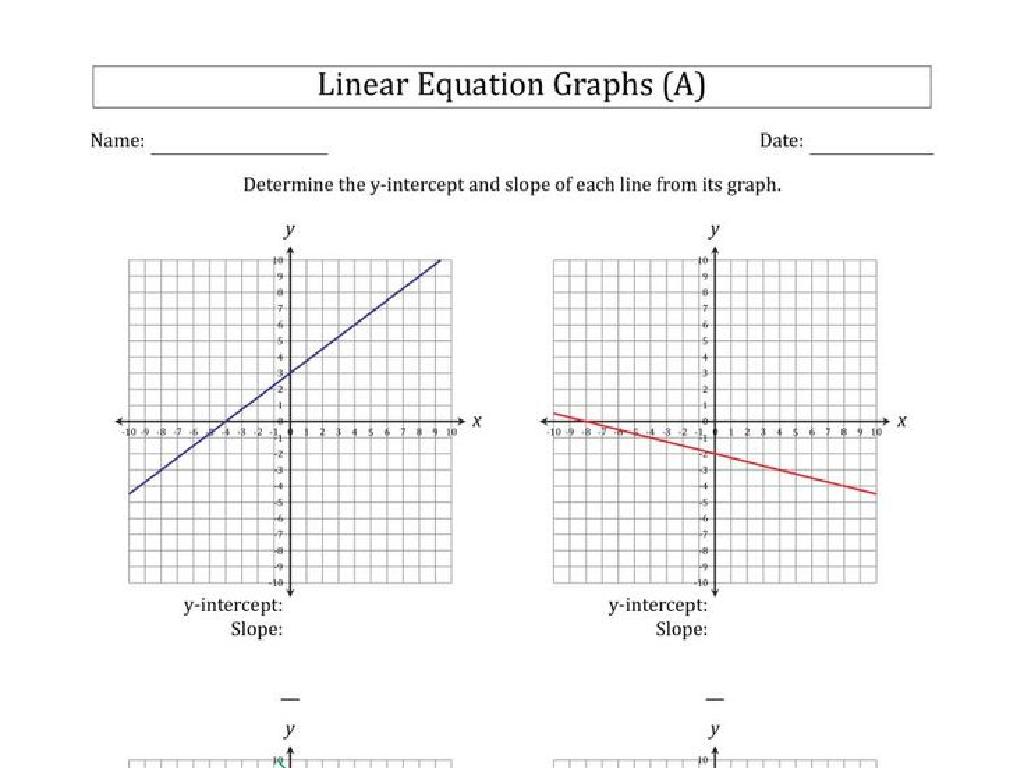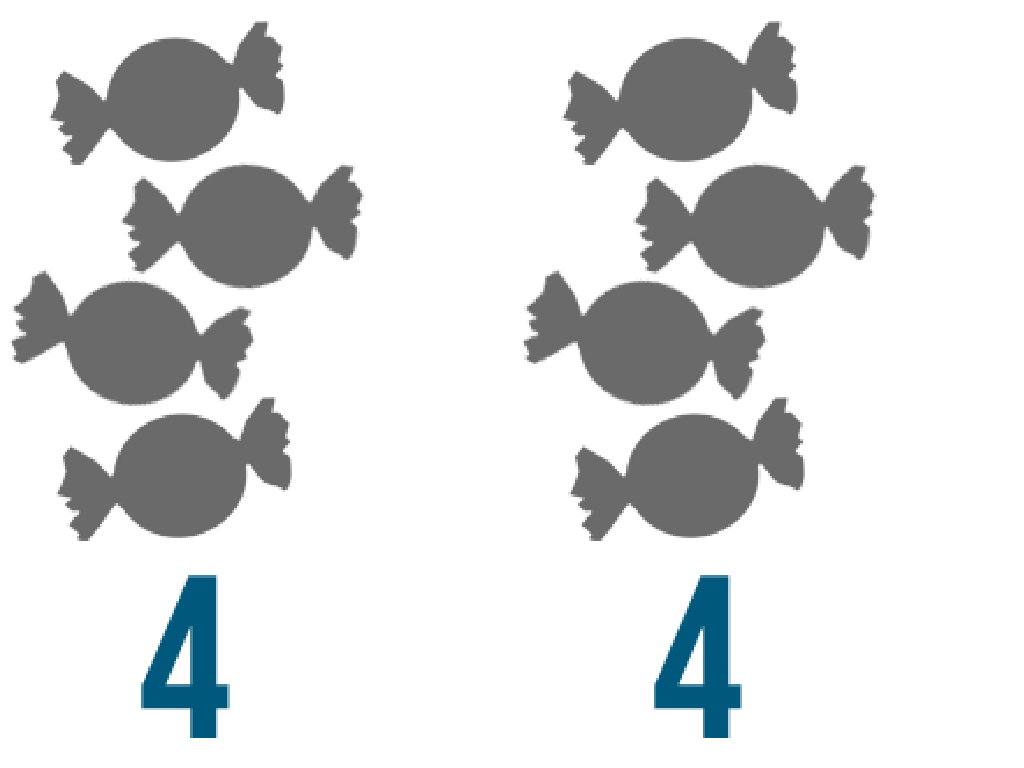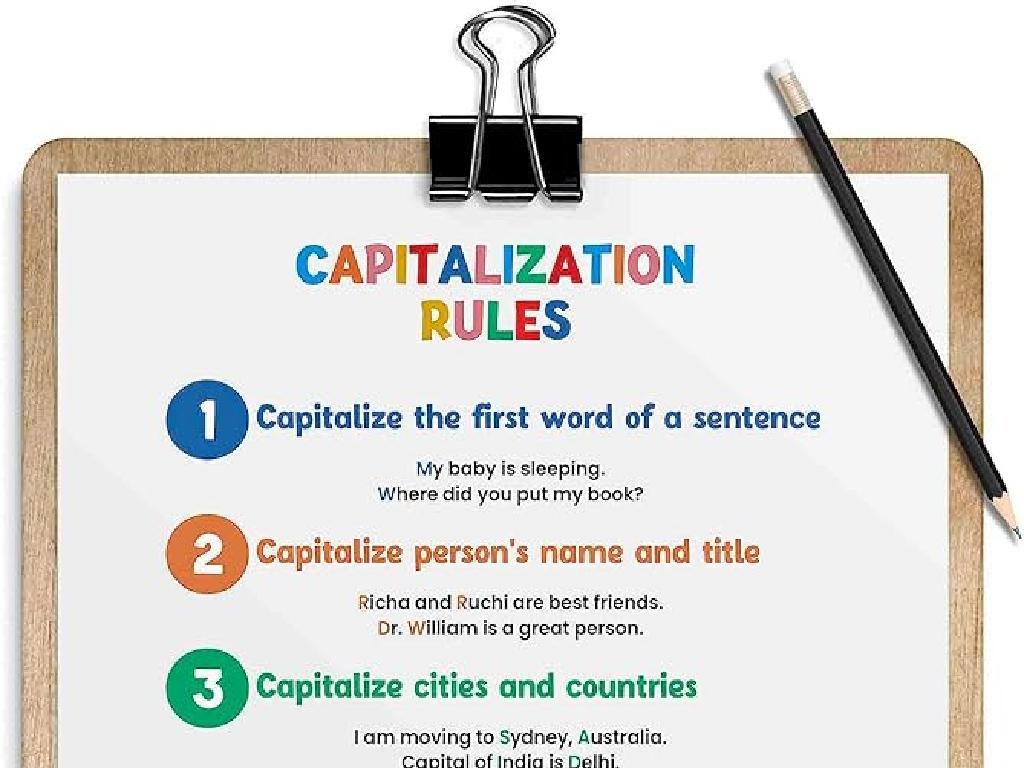Draw Quadrilaterals
Subject: Math
Grade: Fifth grade
Topic: Quadrilaterals
Please LOG IN to download the presentation. Access is available to registered users only.
View More Content
Today’s Adventure: Drawing Quadrilaterals!
– What is a quadrilateral?
A shape with four straight sides and angles.
– Types of quadrilaterals
Squares, rectangles, trapezoids, and more!
– Find quadrilaterals in our world
Look around to find doors, windows, and tables.
– Let’s draw our own quadrilaterals!
|
Begin the lesson by defining quadrilaterals as shapes with four straight sides and angles, ensuring students understand the basic properties. Introduce different types of quadrilaterals such as squares, rectangles, rhombuses, and trapezoids, highlighting their unique features. Encourage students to observe their surroundings and identify quadrilateral shapes in everyday objects, reinforcing the concept that these shapes are all around us. Finally, engage students in a hands-on activity where they draw various quadrilaterals, applying their knowledge creatively. Provide guidance on how to draw each type, emphasizing the importance of straight lines and right angles where applicable.
Defining Quadrilaterals
– A quadrilateral is a four-sided shape
– Think of it like a family name for four-sided figures
– Every quadrilateral has four angles
– Count the corners where two sides meet
– Quadrilaterals can be regular or irregular
– Regular ones look the same on all sides, like a square
|
This slide introduces the basic concept of quadrilaterals to fifth-grade students. A quadrilateral is simply a type of polygon that has exactly four sides. Emphasize that the term ‘quadrilateral’ is a broad classification that includes various shapes such as squares, rectangles, and trapezoids. Highlight that all quadrilaterals have four angles, one at each corner. Discuss the difference between regular quadrilaterals, where all sides and angles are equal, and irregular quadrilaterals, where the sides and angles are not all the same. Use examples like a square for a regular quadrilateral and a kite for an irregular one. Encourage students to look around the classroom for objects that have a quadrilateral shape.
Types of Quadrilaterals
– Squares: Four equal sides
– A square also has four right angles
– Rectangles: Opposite sides equal
– Rectangles have four right angles too
– Rhombuses: All sides equal, angles not 90°
– Rhombuses have equal sides like a square but with slanted angles
– Trapezoids: Only one pair of parallel sides
– A trapezoid has a unique shape with only one set of parallel sides
– Parallelograms: Opposite sides parallel and equal
– Parallelograms’ sides are parallel in pairs and they have equal opposite angles
|
This slide introduces students to the different types of quadrilaterals and their unique properties. A square is a regular quadrilateral with all sides and angles equal. A rectangle has equal opposite sides and angles, but the sides are not all the same length. Rhombuses have equal sides but typically do not have right angles. Trapezoids stand out with just one pair of parallel sides, unlike other quadrilaterals. Parallelograms have both pairs of opposite sides parallel and equal in length. Encourage students to draw each type and discuss the properties that make each one unique. This will help them to visually differentiate between the shapes and understand their geometrical properties.
Properties of Quadrilaterals
– Quadrilaterals have four sides
– Angles add up to 360 degrees
– Each angle’s measure contributes to the total
– Some have lines of symmetry
– Reflective symmetry can be found in shapes like squares
– Parallel and perpendicular lines
– Recognize parallel lines in rectangles and perpendicular in squares
|
This slide introduces students to the fundamental properties of quadrilaterals. Start by discussing that all quadrilaterals have four sides. Then, explain that the sum of the internal angles in any quadrilateral is always 360 degrees, which is a key property for understanding their shape. Discuss symmetry, particularly lines of symmetry, which some quadrilaterals have, such as squares and rectangles. Finally, explain the concepts of parallel and perpendicular lines within quadrilaterals, using examples like squares and rectangles to illustrate parallel lines, and squares to demonstrate perpendicular lines. Encourage students to draw their own quadrilaterals and identify these properties. Provide hands-on activities where students can create various quadrilaterals with paper and identify their properties.
Drawing Squares and Rectangles
– Use a ruler for equal sides
– A ruler ensures sides are straight and equal.
– Measure angles with a protractor
– A protractor helps ensure angles are 90 degrees.
– Squares have 4 equal sides
– Rectangles have equal opposite sides
|
This slide is aimed at teaching students how to accurately draw squares and rectangles. Emphasize the importance of using a ruler to keep the sides straight and equal in length for squares, and equal in length for opposite sides in the case of rectangles. Demonstrate how to use a protractor to measure right angles, ensuring that each corner is 90 degrees. Provide students with rulers and protractors and let them practice drawing these shapes on graph paper. Encourage precision and patience as they work on creating perfect right angles and equal-length sides.
Drawing Rhombuses and Parallelograms
– Draw equal opposite sides
– Measure carefully for symmetry
– Make opposite angles equal
– Angles across from each other should match
– Use a ruler and protractor
– Practice with different sizes
– Try creating small and large shapes
|
This slide is aimed at teaching students how to draw two specific types of quadrilaterals: rhombuses and parallelograms. Emphasize the importance of precision in creating equal-length opposite sides to ensure the figures are symmetrical. Demonstrate how to use a ruler for straight lines and a protractor for measuring angles. Remind students that opposite angles in these shapes are equal and should be measured accurately. Encourage practice by drawing these shapes in various sizes to reinforce the concepts. Provide hands-on activities where students can draw their own shapes and check each other’s work for accuracy.
Drawing Trapezoids
– Identify a pair of parallel sides
– Parallel sides are always straight and never meet
– Draw two non-parallel sides
– Non-parallel sides connect the ends of parallel lines
– Ensure sides are of different lengths
– One side should be longer than the other
– Combine to form a trapezoid
|
This slide is focused on teaching students how to draw a trapezoid, which is a type of quadrilateral with only one pair of parallel sides. Start by explaining what parallel lines are and how to identify them. Then, guide students to draw two non-parallel sides that connect the parallel lines; these sides should be of different lengths to emphasize the trapezoid shape. Encourage students to use a ruler for precision. As an activity, have students draw several trapezoids with varying side lengths and angles, and discuss how changing these elements affects the shape of the trapezoid. This exercise will help solidify their understanding of trapezoids and how they differ from other quadrilaterals.
Let’s Practice Drawing Quadrilaterals!
– Follow steps to draw quadrilaterals
– Use a ruler for straight lines
– Ensure lines are straight and even
– Use a protractor for angles
– Measure angles accurately with a protractor
– Draw different quadrilaterals
– Try squares, rectangles, and other 4-sided shapes
|
This slide is designed to guide students through a hands-on activity where they will practice drawing various quadrilaterals. Emphasize the importance of using a ruler to achieve straight lines, which is crucial for accurately representing the sides of a quadrilateral. Introduce the protractor as a tool for measuring and drawing precise angles, ensuring that students understand how to use it correctly. Encourage them to draw different types of quadrilaterals, such as squares, rectangles, rhombuses, and trapezoids, to reinforce their understanding of the properties of these shapes. Provide detailed guidelines for the teacher to assist students who may struggle with using the tools or understanding the concepts. Offer at least four to five different activities, such as drawing a quadrilateral with given side lengths or angles, to cater to varying levels of student ability and to keep the class engaged.
Class Activity: Quadrilateral Art!
– Create a quadrilateral collage
– Use drawings to make a picture
– Share your art with the class
– Explain the quadrilaterals used
– Identify squares, rectangles, etc.
|
This activity is designed to help students recognize and utilize different quadrilaterals in a creative context. Provide students with materials such as colored paper, scissors, and glue to create their collages. Encourage them to think about how different quadrilaterals like squares, rectangles, trapezoids, and parallelograms can be combined to form pictures or patterns. Once completed, students will present their artwork to the class, explaining the types of quadrilaterals used and how they arranged them. This will reinforce their understanding of quadrilateral properties and their ability to identify them. Possible variations for different students could include creating specific scenes, like a cityscape or a garden, or challenging them to use a certain number of each type of quadrilateral.

